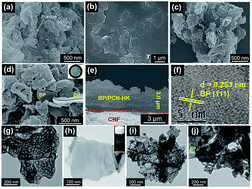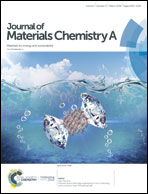Engineering black phosphorus to porous g-C3N4-metal–organic framework membrane: a platform for highly boosting photocatalytic performance†
Abstract
A black phosphorus (BP)/porous g-C3N4 (PCN)-metal–organic framework (MOF) heterojunction was successfully fabricated as a unique macroscopic photocatalytic membrane material. BP was applied for the treatment of air pollution and in a water splitting system. The nanocomposite exhibited extremely high photocatalytic activity in the removal of NO at the ppb-level (600 ppb) under visible-light irradiation with an efficiency reaching 74%, which is much higher than that of reported g-C3N4-related heterojunctions. In addition, the BP/PCN hybrid exhibited an outstanding photocatalytic H2 evolution activity and an efficiency reaching 7380 μmol h−1 g−1, which is 9.5 times higher than that of pure PCN. First-principles calculations also revealed distinctive interfacial electron–hole migration in the BP/PCN heterojunction. Moreover, the stability and recyclability of the photocatalytic membrane demonstrated its promise in the photocatalytic field as well as in solving energy issues and environmental remediation applications.



 Please wait while we load your content...
Please wait while we load your content...